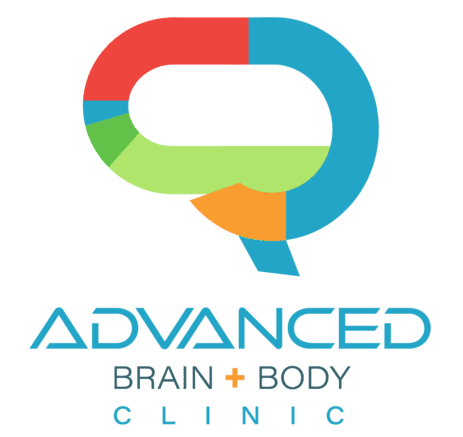While many wait for the ready availability of psychedelics for mental health, ketamine, is changing and saving lives now. Below we share 3 patient stories from our ketamine clinic to illustrate the powerful effect ketamine can have.
That said, mental health conditions can be challenging to treat and ketamine isn’t always the answer. Before using ketamine, patients should have a thorough psychiatric/medical evaluation. Known risks should be mitigated with the FDA-approved Risk Evaluation and Mitigation Strategy (REMS) program.
Each case below demonstrates the efficacy of ketamine’s mechanism of action; blocking the NMDA receptor. Recent evidence suggests that blocking the NMDA receptor ultimately results in a rapid increase in neuroplasticity. This may quickly reduce suicidal thoughts and improve depression.
Denise: A professional and mother hospitalized 15 times for mental health crises over 30 years
Denise is a 47-year-old woman with a long history of bipolar affective disorder, PTSD, GAD, panic disorder without agoraphobia, eating disorder NOS, and insomnia. Denise has a history of physical, sexual and emotional abuse from a parent. She works full-time and has been very successful in maintaining her career despite her repeated hospitalizations.
Denise tried eight antidepressants, five mood stabilizers, and completed six full courses of electroconvulsive therapy (ECT) over 15 years. Each episode started with a psychiatric hospitalization. Although ECT helps improve Denise’s symptoms of depression, it is highly disruptive to her life. She doesn’t like the side effects of memory impairment and inconvenience to her work and personal life.
She has received talk therapy for over 30 years. Plus, she has ben hospitalized 14 times, and admitted to a residential treatment program for alcohol abuse. She has no history of suicide attempts.
Denise received intranasal ketamine nightly for two years in addition to her regular medication regimen. Though this resulted in a sustained improvement in mood, her depression persisted. Denise and her mental health provider decided to start her on intravenous (IV) ketamine. They slowly increased her dosage over the course of a year until her depressive symptoms resolved.
Denise eventually elected to try ketamine intramuscularly (IM), for convenience.
Overall, the ketamine infusions and injections were much more effective than intranasal ketamine, with no additional side effects. Denise was able to discontinue a strong antidepressant after transitioning to ketamine IM. She says her mood is, “the best it has ever been” for over three years with no further hospitalizations or ECT treatments.
Ronna: A young woman subject to self-harm and multiple suicide attempts
Ronna is a 21-year-old female with a history of depression, Borderline Personality Disorder and Posttraumatic Stress Disorder. Her depression story included multiple multiple suicide attempts, hospitalization, and regular self-harm.
After failing at least five antidepressants, as well as psychotherapy and residential treatment programs, she started IV ketamine infusions. Prior to starting, her Montgomery–Åsberg Depression Rating Scale (MADRS) score was 36 or severe. Ronna’s er Suicidal Ideation (SI) score was five (out of six), placing her at significant risk of suicide.
After a single IV treatment, Ronna’s depression improved. Her MADRS score dropped 10 points to 26 and her SI score dropped to 3. Upon completing a standard course of six ketamine treatments, her MADRs score dropped to the moderate level and her SI score was 2.
Ronna has maintained these lowered depression scores for nearly a year with regular maintenance treatments at our ketamine infusion clinic.
Tom: Suffering from anxiety and depression since childhood, ultimately able to discontinue ketamine treatment
Tom is a 51-year-old male who has suffered from anxiety and depression since childhood. Like many treatment-resistant patients, he felt hopeless about his case. He had failed five different antidepressant medications and did not respond to psychotherapy.
Even after a round of transcranial magnetic stimulation (TMS), Tom’s MADRS score remained high at 40. However, he reported no significant suicidal ideation.
From his first treatment with compounded intranasal ketamine, Tom’s depression scores dropped steadily. Ultimately, Tom was able to discontinue ketamine treatments and continues to do well. His most recent MADRS score at 6 or within the normal range.
If you are considering ketamine therapy for depression, request an appointment at our Minneapolis ketamine infusion clinic today! Call 612-682-4912 or email office@advancedbrainbody.com.
Your mental health provider at Advanced Brain + Body Ketamine TMS will discuss the benefits and risks of ketamine therapy. Your provider may also discuss other treatment options as part of a holistic plan to help you get your life back.

Stephen Manlove, MD graduated from the University of Minnesota Medical School and completed residencies in Psychiatry and Internal Medicine through the University of Virginia Medical School. He holds multiple board certifications in psychiatry/neurology, internal medicine and forensic psychiatry. This deep understanding of medicine gives him a unique ability to practice truly holistic psychiatry—fusing lifestyle changes and brain health best practices with genetic testing and a detailed laboratory workup to develop a personalized plan for each patient. As an early adopter of transcranial magnetic stimulation (TMS) and ketamine/Spravato, he and the Advanced Brain + Body team have helped thousands of patients suffering from treatment resistant depression, anxiety and PTSD.

